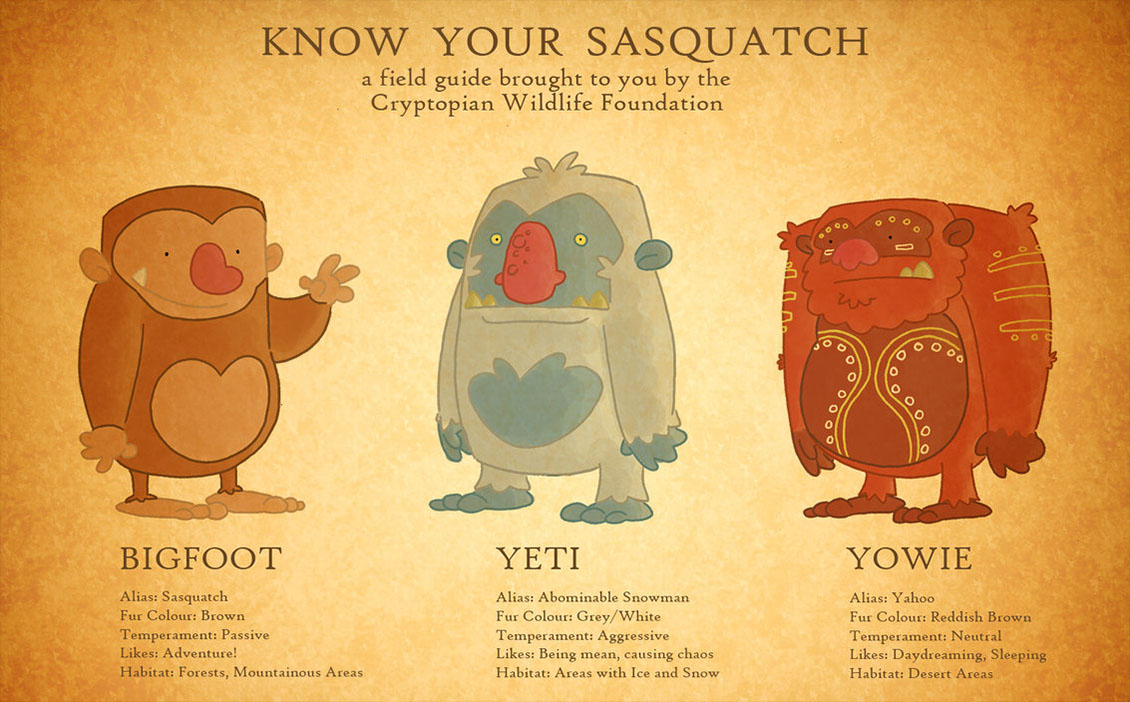where the sasquatches roam…

When a scientist sends you commentary involving the crypto-zoological sasquatch, you have to make a post about it. By itself, his paper is actually a commentary on electronic modeling of ecological niches, a warning to make sure that you’re putting in complete and high quality data to get a reliable model. However, it shows a possible explanation for literally hundreds of bigfoot sightings by overlaying the cryptid’s hypothetical habitats over the habitat of another well known large mammal prominent in the area, one often confused for hairy, two legged monsters walking around in dense forests and inadvertently scaring people out of their wits.
Dr. Lozier and his co-authors plugged in the locations of 551 bigfoot sightings and 95 footprint sites reported from 1944 to 2005 using a software package called MAXENT and came up with a possible range that spans from California to Washington, following major mountain chains. At the same time, they plugged in the range data for black bears and found that their habitat and the hypothetical distribution of sasquatches overlaps just about 85% of the time. So either bigfoot and black bears intensely compete for resources or there are a lot of huge black bears doing something while standing upright and scaring campers who reported them as giant, humanoid ape creatures to the local authorities. And if there are really sasquatches there, at least one or two of the hikers, campers or hunters should’ve found the two species either fighting over food or the dead body of a smaller bigfoot mauled to death by its huge competitor.
But wait a second, what about the same hunters, campers and hikers who insist that what they saw wasn’t a bear and are sure they can tell the difference? What about reports from people who swear they were chased by one? The problem with eyewitness testimony under extreme stress and fear is that memories are shaped by that traumatic experience and recall can be very unreliable. Courts know this very well which is why it takes corroborating testimony from others involved in the events of the case and forensic evidence to get successful convictions rather than just a victim naming an attacker. With all my due respect to experienced outdoorsmen and women, having a huge bear sneak up on you, rear up and growl menacingly in the middle of the night is going to play tricks with your mind as it goes into overdrive and activates the fight-or-flight response. Humans may be smart creatures but we’re not immune to fear.
Still, there are stories that are very difficult to explain and the paper doesn’t even try to pigeonhole all sightings of sasquatches as mistaken identities. In fact, according to the data, 15% of them happen where a black bear usually doesn’t venture. So how do we make heads or tails of sightings that don’t fit the natural pattern? Well, here Dr. Lozier and his colleagues have a possible solution. According to their model, as the current climate change patterns continue, sasquatch populations should start moving away from the coastline and head into the mountain areas of Utah, Arizona and Nevada. If those strangest of sightings closely follow the changes in what’s thought to be bigfoot habitats, there might be something to them. And since today we can track down a species of flower that grows only on a certain hill in South Africa, surely we could track down the kind of active, extensive population needed to maintain a species of enormous, hominid apes…
See: Lozier, J., et al. (2009). Predicting the distribution of Sasquatch in western North America: anything goes with ecological niche modeling Journal of Biogeography DOI: 10.1111/j.1365–2699.2009.02152.x





